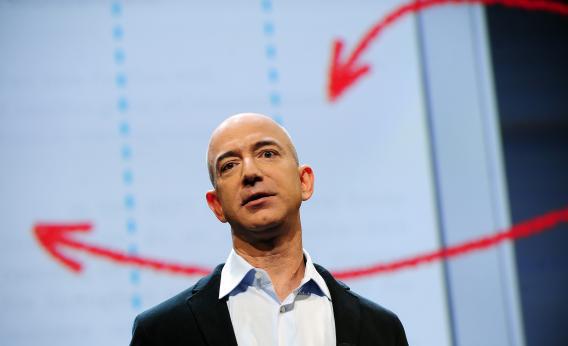Back in 1995, inventor and futurist Danny Hillis explained his idea for a millennium clock in Wired. It would tick once a year, cuckoo once a millennium, and last for 10,000 years. In a world obsessed with the present and the near-term future, it would stand as a reminder of the magnitude of the long, long term.
In the Wall Street Journal today, Stu Woo has a piece called “What Makes Jeff Bezos Tick? A $42 Million Clock, For Starters.” It presents the clock as an example of Bezos’ idiosyncrasies, which have also driven him to co-invent a cell-phone airbag, invest in a decorative glass-making startup, and fund space and deep-sea exploration. The story effectively re-frames Bezos, whose eccentricity and ambition are sometimes underrated, as part of a line of businessmen-turned-epic-adventurers that includes Howard Hughes, Richard Branson, and Larry Ellison.
But just as the clock is only part of Bezos’ story, Bezos is only part of the clock story—and a relatively recent one at that. The millennium clock is the brainchild of Hillis, a pioneer of supercomputing, and he continues to be a driving force in its development. Yet as a 2011 Wired feature on the project made clear, his project has taken on a life of its own.
To pursue his clock idea—which began as more of a mystical, Jorge Luis Borges-style thought experiment than an actual proposal—Hillis co-founded The Long Now Foundation in 1996 with the writer Stewart Brand, a strange and influential visionary in his own right. Brand, who once cruised the San Francisco streets with Ken Kesey’s Merry Pranksters and helped convince NASA to publicize photographs of the Earth as seen from space, was actually the one who conceived of forming a foundation to care for the clock over time. Alexander Rose, an engineer who grew up tinkering with junk in a Sausalito shipyard, has been the foundation’s director since 1997 and has primary responsibility for actually building the clock. And the name “The Long Now” comes from Brian Eno, the experimental musician and composer, who will contribute the music that will play as the clock chimes once a day.
In the Wired piece, Jeff Bezos is not the hare-brained genius but the deep-pocketed patron, a man with the money and long-term vision to turn someone else’s crazy dream into reality. It’s on his Texas property that the gigantic clock is being constructed—inside a mountain, naturally—and it’s thanks to his $42 million that this long-percolating project seems to be picking up steam.
In a blog post last December, Bezos offered a progress report. The team had just finished drilling a 500-foot-deep shaft in which to house the clock. The next step: cutting a spiral stairway and building the various clock components.
Given that the idea for the clock has been public for 16 years, it may seem that the project is coming along slowly. And there does not seem to be any concrete timeline for when it will be finished. With Bezos involved, however, it seems likely that it will eventually begin ticking. And that points to what makes Bezos important in a world that often divides into long-term dreamers and short-term doers: He’s both.
